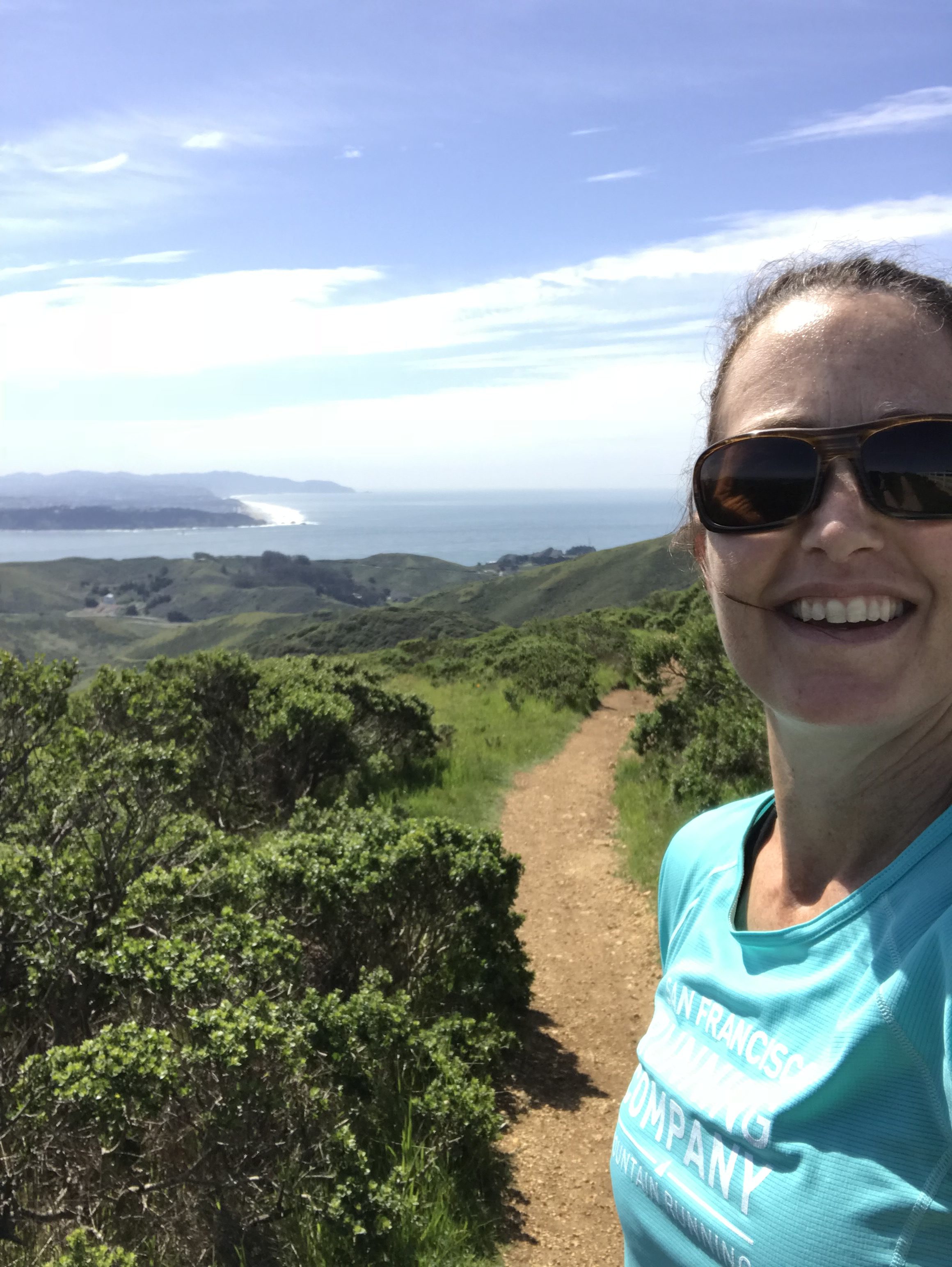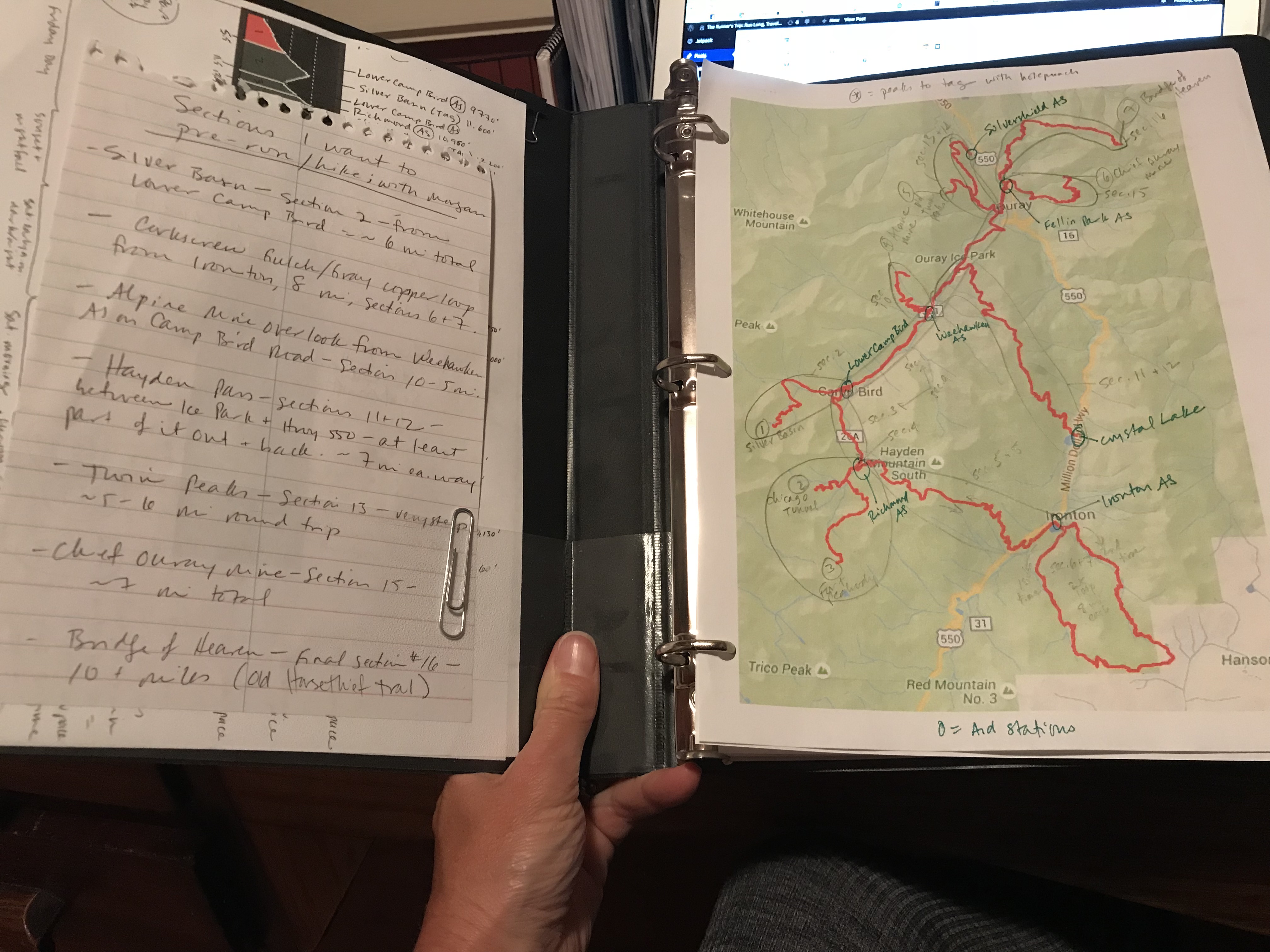Someone once told me, “injuries are great teachers,” and I repeat the phrase to runners I coach. Listen to your [fill in the blank—hamstring, arch, glute or knee pain, for example]. What is the ache trying to tell you about your running form and your training? Pain is your body’s way of communicating and protecting you from further harm. It reminds you to improve flawed running form, to build recovery into training, or simply to invest in a new pair of shoes. Injuries can make you a better, smarter runner.
One month ago, as described in my last post, I injured the soft tissue and nerves in my lower back and butt (specifically, the gluteus medius and piriformis) when I fell about 5 feet off my horse and landed on my backside. Since then, I’ve learned more about the whack-a-mole nature of injuries, in which one sore spot starts to feel better but then another sore spot pops up and demands attention.
Because these injuries stemmed from a sudden accident, rather than from biomechanics or overuse, they taught me more about my character and physiology than about my running per se. I learned (or was reminded) that I’m impatient and grumpy when things don’t get better quickly, I’m a moody mess when I lose the structure and satisfaction of my running routine, and I’m slower to heal—and quicker to lose fitness—than I was a decade ago.
Numerous well-intentioned runners tried to cheer me up via comments on social media by pointing out the obvious, that I should use the time for other pursuits and try to maintain fitness by crosstraining. But if one more person tells me to enjoy extra free time or to get in a pool, I think I’ll repeatedly bang my foam roller against the wall!
The good news is, the primary injured area feels all better, and this past week I returned to a cautious and limited amount of running. Three weeks ago, every step on my left side sent a twinge of pain to my upper butt area on the left side, causing me to limp. Now I can hop on my left foot and go downstairs pain-free.
The not-so-good news is, two entirely different areas—my right upper hamstring and right hip—flared up and feel tender, and I’m much more out of shape. I put on 4 to 5 pounds due to reduced exercise and emotional eating. I tried to be “good” while unable to run by working out a few times a week on the recumbent bike in our garage, which elevated my heart rate and worked my legs; nonetheless, my cardio fitness declined noticeably, so I’m huffing and puffing on uphills. I have renewed empathy for clients who get injured, and for whom an easy 6-miler feels long and challenging—and triumphant—after weeks off.
Being injured also reminded me of these essential steps to recovery:
1. Get a proper diagnosis. Researching your symptoms online is important but not a substitute for high-quality sports med and medical imaging. I’m grateful I had insurance and access to get an Xray, ultrasound, and an appointment with my trustworthy doc who referred me to PT. The imaging ruled out the possibility of a hematoma or hairline fracture, and illuminated the nature of the soft-tissue injury.
2. Find a runner-savvy and attentive physical therapist. I started out at my usual PT place, which is quite good, but I wanted to seek a second opinion from Hal Rosenberg of Mt. Tam Sport and Spine after listening to this UltraRunnerPodcast interview with him, and after learning that he treats a lot of top ultrarunners whom I admire. Hal’s active-release technique and other advice felt more effective, so I made the switch to him.

Hal Rosenberg works on my cranky hamstring.
3. Be as serious about your recovery as you are about your training. As the prior two points suggest, recovering from injury takes effort and focus—the same kind of drive that makes you a good runner. Try to shift your focus from being the best runner you can be, to being the best patient you can be. If you’re in denial or don’t want to deal with the appointments and hassle of getting a diagnosis and treatment, or if you blow off worthwhile physical therapy, then you’ll be stuck in the injury rut longer.
4. Put your training and racing schedule on hold. My training plan called for increasing weekly mileage from the low 50s to the 60 – 70 range, with specific workouts for each day, in late March and April in preparation for the April 28 Canyons 100K. That plan got shelved, and I recorded lots of zeroes in my log.

My old-school handwritten log (I also use Training Peaks for more sophisticated data crunching & tracking, but I like keeping this as a backup and diary). Sigh….
It’s painful to look at the chart in my log that shows my mileage plummeting and then evaporating—but it is what it is. Some runners who work with a coach or follow a plan sabotage their recovery and delay treatment because they want to stick to the schedule and log those miles.
5. Come back gradually. At first, I was good and careful about this; I restricted the first three runs back to walk/run combos of small increments of running, just a mile each, and I stopped before the pain returned. I had my first “real run” last Monday in the Marin Headlands, when I ran slowly for a solid hour, but I made the mistake of tackling too much downhill. (The uphills felt great; but of course, I had to run back down, and that ached.)

First real run back felt glorious—but I was sore afterward.
That run aggravated hip soreness, which is likely the TFL (tensor fasciae latae) stressed because other muscles aren’t back to fully functioning. I took a day off and did PT, but then did something a little reckless on Wednesday—a 12-mile hilly Headlands run in the rain with a friend. My lower back and hip flared up during the second half as we bombed down the hills from Pan Toll to Muir Beach in slippery mud during a downpour. But ahhhh it felt so good to be on the trail again!
6. Never forget that your situation could be worse and you’re lucky it’s not. The day after I got thrown off my horse, my friend Payge, who’s a world-traveling adventurer, ultrarunner and yoga instructor, fell 15 feet in a freak tree-trimming accident. She broke her back, wrist and ankle. Her situation hit me like a splash of ice water, and I’ve been following her recovery with awe and concern. “Your health is your wealth,” my first coach used to say, and injuries teach us that you should never take good health for granted.
A few years ago, I wrote an article for Trail Runner about understanding and coping with the emotional toll of being a runner sidelined by injuries. I found myself revisiting that article’s advice and those stages of grief. Finally, I feel I’m on the mend and in the “acceptance” stage.
I have my sights set on getting back in shape for Jason Koop’s Memorial Weekend ultrarunning camp in Colorado Springs, which will be key to training for the San Juan Solstice 50 in June. And then on the last weekend of July, 16 weeks from now, I face the ultimate test of the Ouray 100, about which I’m alternately obsessed and terrified.
During a bout of insomnia last week, I spent the middle of the night printing and annotating all the info on the Ouray 100, creating a full binder.


It’s kind of ridiculous to contemplate covering 102 miles in high altitude with over 40K of climbing, given that an hour-long run of 6 miles gaining 500 feet feels like a big deal post-injury, but I’ll see how my training goes week by week and do the best I can. If anything, going from 0 to 102 miles—and having this month-long forced time off—makes me more motivated to meet the challenge.
But, I will be realistic and keep an ear open to listen to that great teacher and protector called pain.
For further reading and viewing, I recommend:
- “Achieving the Mission Impossible,” an archived article by my friend Garett Graubins, about how he trained for Hardrock on minimal mileage while juggling obligations in a stretched-thin life. I’ll be following his advice for my comeback.
- The Ouray 100 documentary, a recently released short film about Avery Collins and the Ouray 100, that revved my stoke meter to the max.
- If you are looking for a summer adventure, check out the mountain-running camp near Ouray, Colorado, that I’ll be coaching and co-guiding! We have two dates, July 11 – 14 and September 23 – 26.

Comments are closed.